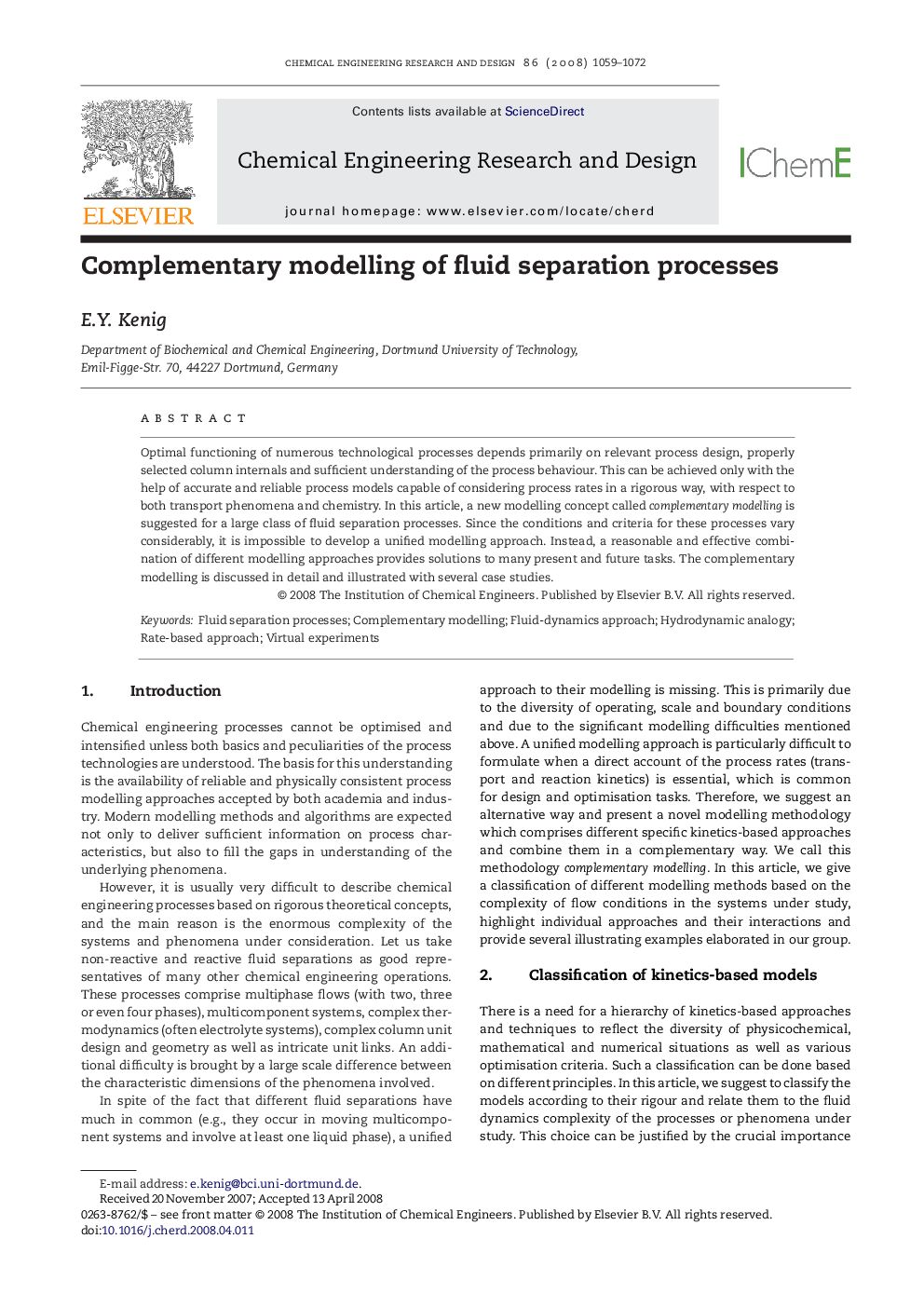| Article ID | Journal | Published Year | Pages | File Type |
|---|---|---|---|---|
| 622440 | Chemical Engineering Research and Design | 2008 | 14 Pages |
Abstract
Optimal functioning of numerous technological processes depends primarily on relevant process design, properly selected column internals and sufficient understanding of the process behaviour. This can be achieved only with the help of accurate and reliable process models capable of considering process rates in a rigorous way, with respect to both transport phenomena and chemistry. In this article, a new modelling concept called complementary modelling is suggested for a large class of fluid separation processes. Since the conditions and criteria for these processes vary considerably, it is impossible to develop a unified modelling approach. Instead, a reasonable and effective combination of different modelling approaches provides solutions to many present and future tasks. The complementary modelling is discussed in detail and illustrated with several case studies.
Related Topics
Physical Sciences and Engineering
Chemical Engineering
Filtration and Separation
Authors
E.Y. Kenig,
